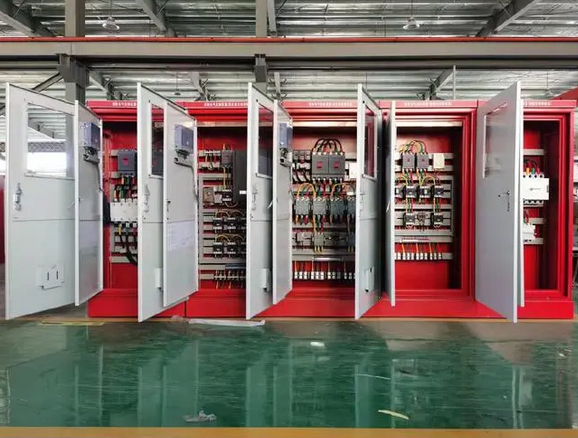Installation of diesel engine control cabinet
The installation of the diesel engine control cabinet is a process that requires careful operation and certain steps to be followed. The following is an installation guide compiled based on relevant information:
1. Preparation before installation
Environmental inspection:
Ensure that the installation environment is dry, well ventilated, and free of open flames, flammable items, and corrosive gases.
Check whether the ground is stable so that the control cabinet can be installed firmly.
Tool and material preparation:
Prepare the required installation tools, such as screwdrivers, wrenches, electric drills, etc.
Ensure that there are sufficient insulating materials, connectors, and fasteners, such as screws, nuts, washers, etc.
Control cabinet inspection:
Check whether the appearance, specifications, and accessories of the control cabinet are intact and meet the installation requirements.
Check whether the components of the control cabinet are complete and undamaged.
2. Installation steps
Foundation production and installation:
Design and make a suitable installation foundation according to the size and weight of the control cabinet to ensure horizontality and load-bearing capacity.
Fix the installation foundation on the ground to ensure stability and no shaking.
Control cabinet transportation and placement:
During the transportation process, ensure the safety of the control cabinet to avoid collision and damage.
Use a crane, pulley system or other handling equipment to place the control cabinet on the installation foundation to ensure accurate positioning.
Cable connection:
Sort the cables and mark the purpose and connection position of the cables.
Connect the cables to the corresponding terminal blocks of the control cabinet according to the design drawings and specifications to ensure that the connection is firm and the contact is good.
Pay attention to the correctness of the power wiring, which should be operated by a professional electrician.
Functional test:
After the cable connection is completed, perform a functional test to check whether the control cabinet is operating normally and whether the signal transmission is stable.
Test whether the control buttons, switches, indicator lights, etc. are working properly.
Safety precautions:
It is forbidden to work with power on and make sure that the power is turned off.
Operators should wear personal protective equipment such as safety helmets and gloves.
Comply with the regulations for working at heights, such as wearing seat belts and prohibiting working under the influence of alcohol.
Monitoring equipment should be installed during the installation process to monitor the operation process in real time.
3. Acceptance and commissioning after installation
Appearance inspection:
Check whether the appearance of the control cabinet is intact and there are no obvious scratches, dents or deformations.
Ensure that all fasteners are firmly installed and there is no looseness or falling off.
Functional test:
Test the protection functions of the control cabinet, such as overload protection, short circuit protection, etc.
Verify whether the control cabinet can automatically cut off the power supply when a fault occurs or exceeds the rated parameters, and display the warning or fault status through the indicator light.
Performance evaluation:
According to the actual operation of the control cabinet, evaluate its performance, including stability, reliability, efficiency, etc.
Propose optimization suggestions, such as improving control strategies, replacing components, etc., to improve the performance of the control cabinet.





